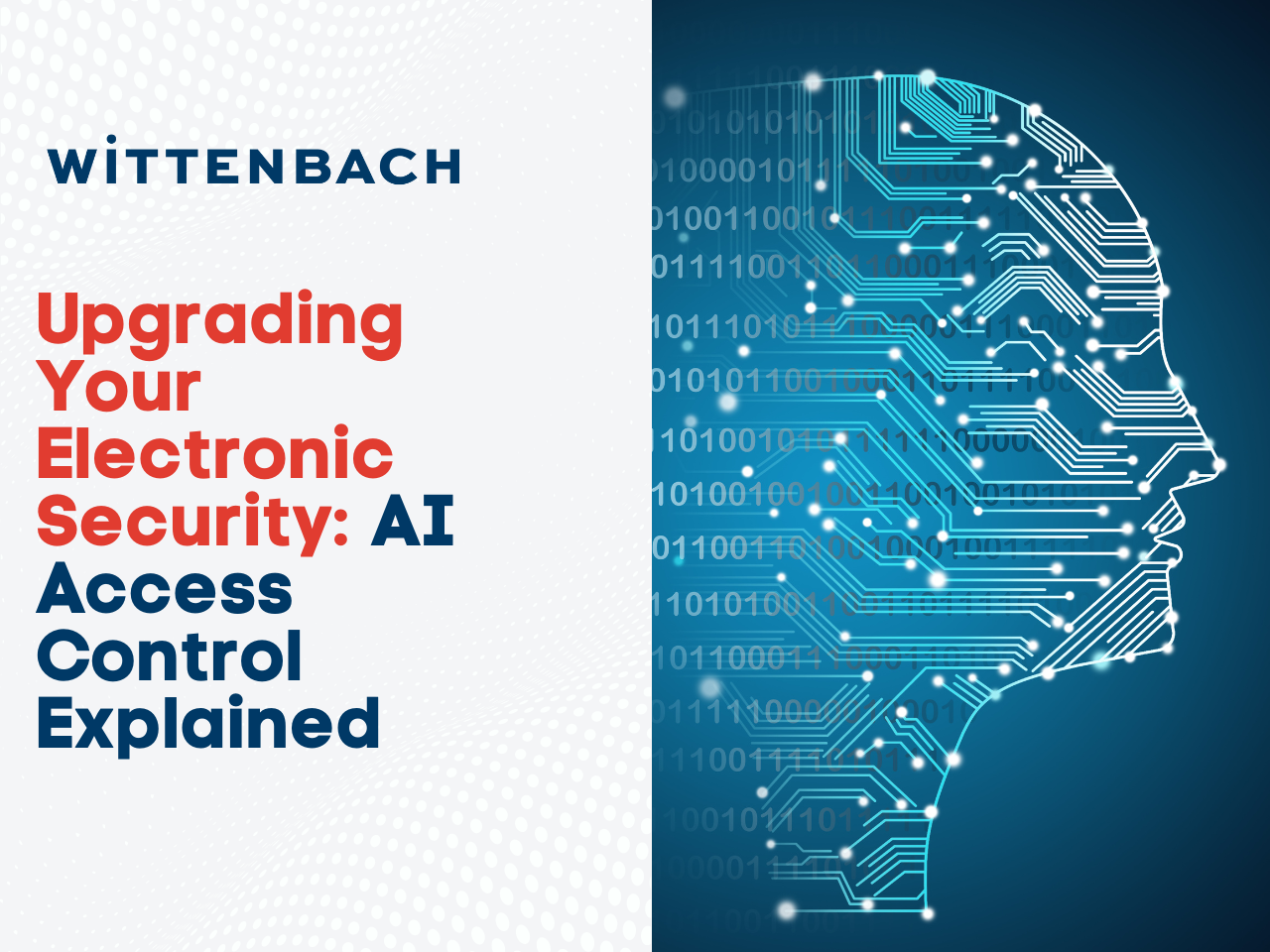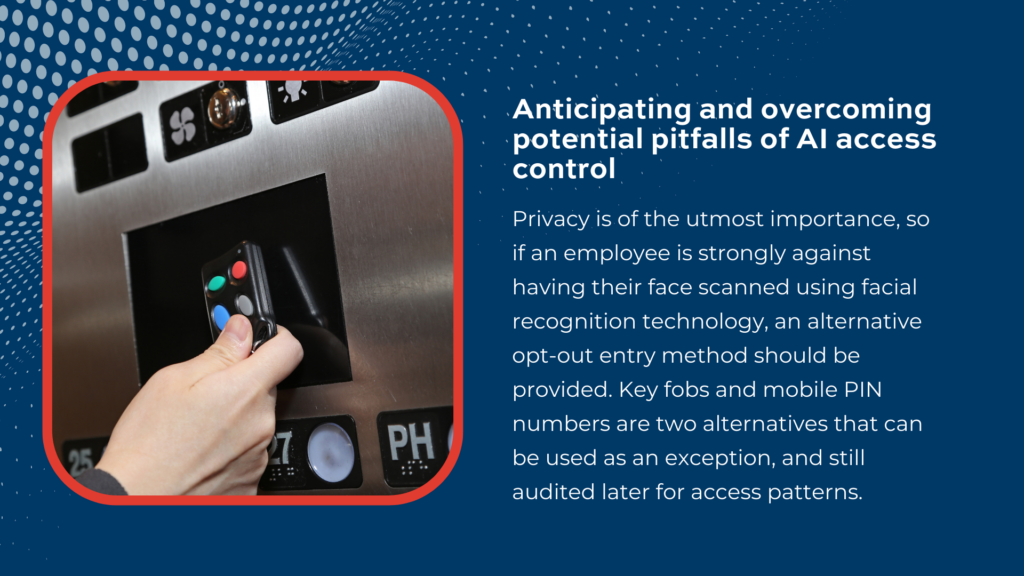Access control can be an integral electronic security measure at any organization where assets, information, and personnel must remain secure. Traditional access control systems require key, card, or fob credentials. As artificial intelligence, or AI access control, continues to spread, biometric data could someday replace traditional control systems requirements to grant or deny entry with ease.
The use of access control is relevant across commercial spaces and industries from warehouses and laboratories to hospitals and government buildings. At Wittenbach, our deep experience and strategic partnerships with leading electronic security manufacturers can help you optimize the advantages of an AI access control system. Below, we will explain current functionality as well as ways to avoid potential pitfalls, offering a balanced guide to navigate the decision process of purchasing or upgrading your access control capabilities.
How is AI growing in the access control space?
Greater than the sum of their basic components, access control systems use an access point, user credentials, a reader or keypad, and an access control server to allow authorized employees to enter secured areas. When AI is introduced to an access control system, it is typically in the form of facial recognition software. The system will scan the face of the person trying to enter the building or zone, then will review the unique facial features against a database of photos to determine whether access should be granted. This biometric scan replaces the need for keycards and fobs, ensuring that access credentials don’t fall into the hands of a criminal or otherwise unauthorized entrant. AI facial recognition can be used via a 2D photography method, a robust 3D scan, fingerprinting, or an iris scan.
In addition to facial recognition capabilities, AI can track unauthorized or suspicious entry through behavior analytics. A LinkedIn article by Slamm Technologies CEO Samuel Boateng explains, “These techniques allow security analysts to search through large amounts of data more quickly, helping them to uncover potentially malicious activity that traditional security tools may have missed. AI-powered threat hunting also allows organizations to use historical data and analysis to better understand their systems’ use and where potential vulnerabilities may be located.” The same AI facial recognition technology can also aid in a law enforcement investigation if a breach were to occur.
The benefits of an AI access control system are many and intertwined. AI facial recognition and behavior analysis functions can also be integrated with other electronic security products, such as Network Video Recorder (NVR) surveillance systems. They are also environmentally friendlier, providing a way to eliminate the plastic of key cards and fobs. User management is also a benefit, as your security team can centrally permit or deny entry without having to manage physical devices assigned to each employee.
Anticipating and overcoming potential pitfalls of AI access control
Because AI access control is a burgeoning and evolving means to protect your organization, it is important to understand and weigh possible pitfalls of a new system. Adopting leading-edge technology and scaling it across your business can be an exciting milestone; however, that effort must also include educating your team on ways to outpace potential vulnerabilities and criminal activity.
- Privacy is of the utmost importance, so if an employee is strongly against having their face scanned using facial recognition technology, an alternative opt-out entry method should be provided. Key fobs and mobile PIN numbers are two alternatives that can be used as an exception, and still audited later for access patterns.
- Similarly, data security is a sensitive topic in the world of biometric scanning. Properly encrypting your devices will insulate your data from a potential infiltration and electronic theft. Access control systems should fall under your company’s electronic security policy, ensuring sufficient security infrastructure and personnel to enforce it.
- Cost is another possible concern when adopting an AI access control system. The cameras, locks, and software are of greater expense than their key card predecessors: installation, maintenance, upgrades, and more. However, AI access control shrinks the risk of a break-in, so the ability to prevent a costly breach increases, offering a swifter return on your investment. Additionally, if you are implementing AI access control across locations, consider purchasing several system components at the same time to leverage economies of scale on pricing.
In summary
AI access control can enhance your business’ existing electronic security methods, offering an automated way to govern entry and reduce risk. A thorough understanding of an access control system’s benefits and vulnerabilities will help you to select, implement, and scale the right one for you. Contact Wittenbach to explore your next electronic security project; our experts can help you align product features and functions with your organization’s unique needs.



